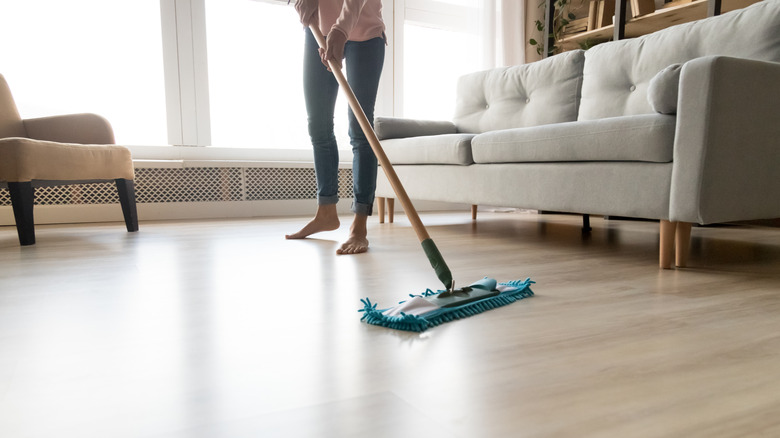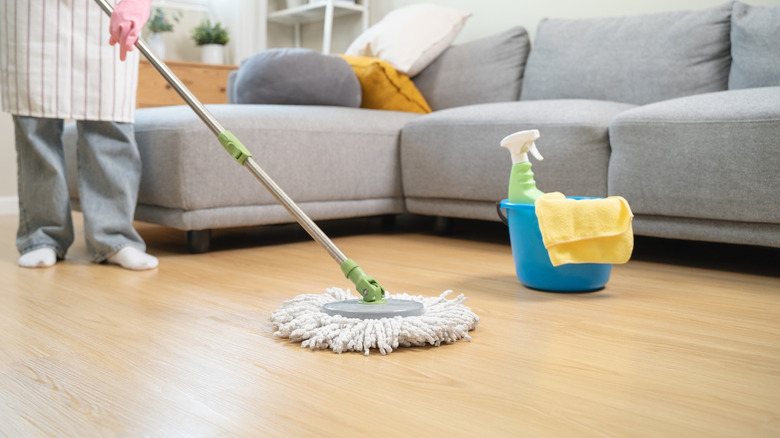If Your Laminate Floors Show These Signs, It's Time For A Deep Clean
Laminate floors have become popular over the past few decades, at least partially due to their low cost and easy installation compared to hardwoods. They are also durable, resistant to scratches, and relatively easy to keep clean. A normal weekly cleaning routine for laminate floors generally includes just sweeping or vacuuming, along with occasional spot treatments when spills occur. But it's also important to give your laminate flooring a deep cleaning on occasion.
The frequency of deep cleaning your floors depends on several factors, including the presence of pets in the house, the amount of foot traffic in the room, the proximity of the floor to a muddy outdoor space, and the regular cleaning habits of the people in the home. Since many households have ever-changing contributing factors, the frequency of deep cleaning can change regularly. Instead of simply establishing a deep-cleaning schedule, watch for the signs that your laminate floors need a thorough cleaning.
One sign it's time for a deep clean is when your laminates look dull and weathered, even though the dirt and debris have been swept away. This can be a sign that the dirt buildup is more than your broom can handle. Another tip-off that a thorough cleaning is needed is the presence of stains that aren't coming off with a broom or a damp rag. Liquids that spill and aren't immediately cleaned can be common staining culprits in kitchens. Finally, if your floor smells like pet urine or has other foul odors that need to be eliminated, it's time for a thorough cleaning.
How to give your laminates a deep cleaning
If your laminate floors are looking dull, stained, and dirty, it's time for a thorough cleaning. The first step is to sweep or vacuum your floors to remove all of the loose debris and dirt. Even though your broom is no longer removing the buildup of dirt and other gunk that has dulled the shine from your floor, it's still important to remove any loose particles before you go in for a deep clean.
Using the wrong type of cleaner can contribute to the buildup that leaves your laminate floor looking dingy, so it's important to get it right during deep cleaning. Mix a simple DIY laminate floor cleaner made of 1 gallon of warm water, 1 cup of white vinegar, and a few drops of dish soap. Or, use a commercial floor cleaner formulated for laminate. Dip your mop in the solution, and wring it out well. Mop your floor in sections, taking care not to soak the laminates, as excess moisture can damage them. Then, dry your floors with a towel. Tackle grease stains with a damp cloth dipped in dish soap, and rub them clean. Finally, use a dry mop or microfiber cloth to buff the floors.
Maintain those shiny, fresh-smelling floors with regular cleaning habits. Though regular cleaning won't eliminate the need for periodic deep cleanings, it will allow you to wait longer while also helping to extend the life of your laminates. Surface-level dirt and grime can be tackled with weekly sweeping to avoid the dulling buildup, followed by mopping every other month or as needed using products and cleaners that are safe for laminate floors. Deep cleaning, as described above, should be performed every two to three months or when the previously mentioned issues are observed.

